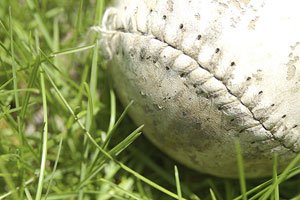Gilroy
– A new report that found significant levels of perchlorate in
breast milk nationwide will get serious consideration from the
state agency charged with ensuring the public health goal for
contaminant of the potentially toxic compound, a spokesman for the
Office of Environmental Health Hazards Asse
ssment said Thursday.
Gilroy – A new report that found significant levels of perchlorate in breast milk nationwide will get serious consideration from the state agency charged with ensuring the public health goal for contaminant of the potentially toxic compound, a spokesman for the Office of Environmental Health Hazards Assessment said Thursday.
“In general, with drinking water contaminants we try to stay up on the latest science, and that’s especially true with perchlorate because there’s a great deal of interest and there’s a lot happening,” spokesman Allen Hirsh said. “We definitely want to get a handle on what the study means.”
The perchlorate contamination in San Martin and Morgan Hill has been linked to a former road-flare factory in Morgan Hill owned by Olin Corp. Much of the contamination in southern California has been linked to the defense industry. Perchlorate is an ingredient in rocket fuel.
Released earlier this week by doctors at the Institute of Environmental and Human Health at Texas Tech University, the study found perchlorate in breast milk in each of 36 samples from women in 18 different states, including California. The milk was contaminated at levels from 0.6 to 92.2 parts per billion, at an average of 10.5 parts per billion. About a year ago, OEHHA set California’s public health goal at 6 parts per billion.
Part of the state Environmental Protection Agency, OEHHA has been considering altering the goal in response to a January report issued by the National Academy of Sciences and lobbying from a chorus of environmental advocates who wish to see the goal revised downward.
The NAS report did not set a drinking water standard, issuing instead a reference dose that it described as being the safe daily intake for an adult male of about 155 pounds. That translates to a standard of roughly 14 parts per billion for water and 23 parts per billion including food consumption. The standard would be lower for children. Olin currently provides bottled water for residents whose water tests at or above 4 parts per billion.
A sodium compound, perchlorate inhibits the thyroid gland’s ability to produce hormones by interfering with iodide uptake and has been shown to hamper brain development in baby rats. Nursing mothers are the only source of iodide babies need for proper thyroid function. Texas Tech researchers wrote that its results make it “obvious that the NAS safe dose … will be exceeded for the majority of infants.”
The rat data touted by the Texas Tech study was, however, dismissed by NAS scientists. Dr. Richard B. Johnston, chairman of the NAS committee, said at the time the committee was “insecure about extrapolating from rats.” because their thyroids function differently from humans.
Dr. Marty Fenstersheib, health officer for Santa Clara County, said Thursday that Texas Tech’s study sample is too small to draw broad conclusions, but that it should be taken seriously by people living in contaminated areas.
“I think people should pay attention and put it in the context of what we know we’re dealing with in our community,” Fenstersheib said.
Nine of the Texas Tech samples tested above California’s public health goal. Fifteen tested below 3 parts per billion. By comparison, 50 samples of cow’s milk purchased in 11 states tested at an average of 2 parts per billion, with a high of 11 parts per billion in California.
Renee Sharp, senior analyst for the Environmental Working Group in Oakland, said Thursday that the body’s tendency to flush perchlorate quickly indicates that the nation’s food supply is tainted and that people are ingesting perchlorate daily.
“I think the explanation is that we’re being exposed to perchlorate on a pretty constant basis,” Sharp said.
A U.S. Food and Drug Administration report released last November found perchlorate in milk and lettuce in each of the 15 states where samples were tested, including some areas with no known source of contamination. “The fact that perchlorate contamination in breast milk is pervasive should make regulators think twice about what they’re going to do to protect infants,” Sharp said.
Hirsh said his agency will decide soon if it will reopen discussion on the public health goal. He said he doesn’t expect any significant change based on the NAS report, but said evaluations of scientific data happen on a parallel track. Another state agency, the Department of Health Services, is in the process of setting a drinking water standard. That standard can not be lower than the public health goal.












